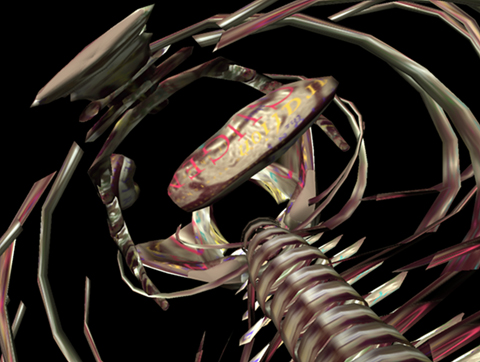Dancing with the Digital Dervish
This landmark artwork in virtual reality (VR) received unprecedented art funding from the National Department of Communication, Canada, and the Banff Center for the Arts. It was one of six selected from an international pool of collaborative groups which includes the foremost media artists and computer scientists working with virtual and communications technologies. This artwork was one of the very first in VR.
The scope of the work required four computer scientists and six art technicians over two years. The computing demands of the new medium necessitated 3 forms of dissemination: major dance/theatrical performances, interactive exhibitions, and large scale video screenings. As a major dance and theatrical production, Dancing with the Virtual Dervish: Virtual Bodies premiered at the Banff Centre for the Arts, with two subsequent peer-reviewed performances at international art venues.
This work resulted in numerous performances, exhibitions, and screenings, as well as lectures, peer-reviewed publications, and broadcasts on the Discovery Channel and the BBC. It is frequently cited in books (art and computer science), journals, and online sites.
This was the first artistic VR artwork concerned with embodiment. The VR "world" was constructed form MRI data from Gromala's torso, and comprised sternum, ribs, a kidney, a lung, a heart a spine and a pelvis. The body was in a continual state of decay and reformation depending on immersants' navigational movements. As immersants "flew" (six degrees of freedom) through the body parts they expected to enter smaller worlds, but were confronted with enormous, surreal spaces. At this point naviagtion was only possible through spatialized sound. The sensation of flying and spatial dissonance provoked immersants to become aware of their proprioceptive sense, which we are usually not aware of.

